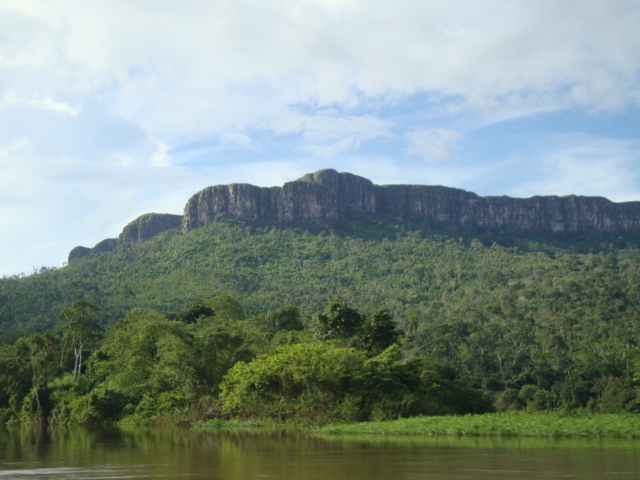Why Are Guiana Highlands Mountains So Prominent?
Geological Resilience: The Ancient Rocks of Guiana Highlands
Guiana Highlands Prominence

Tucked away in the northeastern corner of South America, the Guiana Highlands stand as a testament to the grandeur and geological wonder of our planet. This region, characterized by its towering tepuis (tabletop mountains) and pristine landscapes, captivates explorers, scientists, and nature enthusiasts alike. In this blog post, we delve into the reasons why the Guiana Highlands mountains are so prominent. Shedding light on the geological and ecological factors that have shaped their prominence over millions of years.
Ancient Rock Foundations
The Guiana Highlands owe their prominence, in part, to their ancient geological history. These mountains are primarily composed of Precambrian rocks, some of the oldest on Earth. The crystalline basement rocks, which form the foundation of the highlands, have resisted erosion for billions of years. This resistance to weathering and erosion has allowed the tepuis to rise dramatically above the surrounding landscape, creating their distinctive tabletop appearance.
Over eons, these ancient rocks have been uplifted, tilted, and folded, contributing to the diverse topography of the Guiana Highlands. This geological resilience has played a pivotal role in making these mountains prominent features in the South American landscape.
Tepuis: Natural Monuments of Erosion Resistance
The most iconic features of the Guiana Highlands are undoubtedly the tepuis. These flat-topped mountains, rising abruptly from the surrounding lowlands, are a marvel of erosion resistance. The reason for their flat summits lies in the durability of the quartzite and sandstone layers that cap them.
Millions of years of erosion have worn away the softer rock layers, leaving behind the remarkably resistant caprock. This caprock, often forming cliffs that drop sheer hundreds of meters, is what gives tepuis their distinctive tabletop appearance. The combination of ancient rocks and erosion-resistant caprock has made the tepuis some of the most visually prominent mountains on Earth.
Isolation and Biodiversity
The Guiana Highlands’ isolation has contributed significantly to their ecological and biological prominence. The towering tepuis act as isolated islands in the sky, each possessing a unique ecosystem. These isolated habitats have fueled the evolution of numerous endemic species found nowhere else on Earth.
One of the most famous examples of this isolation-driven biodiversity is the Roraima tepui. Often described as a “biological island,” Roraima houses a host of plant and animal species that have adapted to its isolated environment. The presence of numerous endemic species has drawn the attention of scientists and conservationists, further highlighting the ecological prominence of the Guiana Highlands.
Waterfalls and Rapids: Geological Drama
The Guiana Highlands are a land of dramatic water features, from towering waterfalls to turbulent rapids. These features are a direct result of the region’s topography and geology. The sheer cliffs of the tepuis, coupled with the high rainfall in the area, give rise to some of the world’s tallest waterfalls, such as Angel Falls.
The geological makeup of the highlands also influences the river systems. The combination of resistant caprock and softer rock layers beneath creates a scenario where rivers erode the softer layers more rapidly, resulting in the formation of deep canyons and rapids. These geological dramas only add to the prominence of the Guiana Highlands’ landscapes.
Scientific Interest and Exploration
The Guiana Highlands have long piqued the interest of scientists and explorers. Their geological uniqueness, coupled with their relative inaccessibility, has made them a prominent destination for research expeditions. Geologists, botanists, biologists, and other scientists flock to the region to study its ancient rocks, unique ecosystems, and endemic species.
Additionally, the prominence of the Guiana Highlands in scientific circles has led to increased awareness of their ecological importance. Conservation efforts in the region are gaining momentum, as scientists and conservationists work to protect the unique biodiversity of the highlands.
Conclusion: A Geological and Ecological Marvel
In conclusion, the Guiana Highlands mountains are prominent for a multitude of reasons. Their ancient rock foundations, erosion-resistant caprock, unique ecosystems, and dramatic water features all contribute to their prominence in the natural world. These mountains are not only geological marvels but also vital ecosystems that continue to captivate and inspire all who explore their rugged beauty.
As we continue to unravel the secrets of the Guiana Highlands, our understanding of their prominence deepens, and their significance in the context of our planet’s natural wonders becomes increasingly apparent. These mountains stand as a testament to the power and beauty of Earth’s geological and ecological processes.




